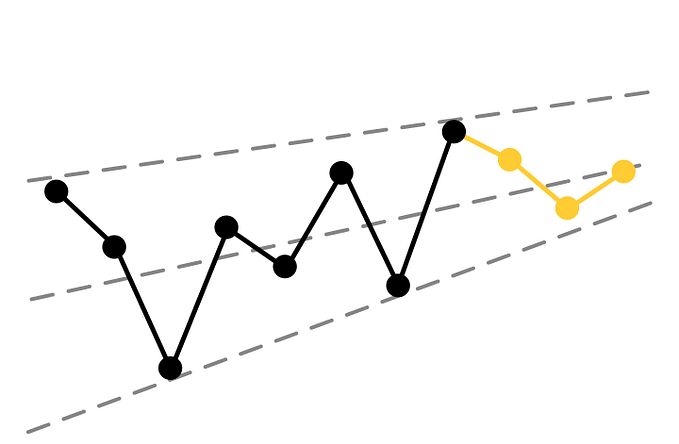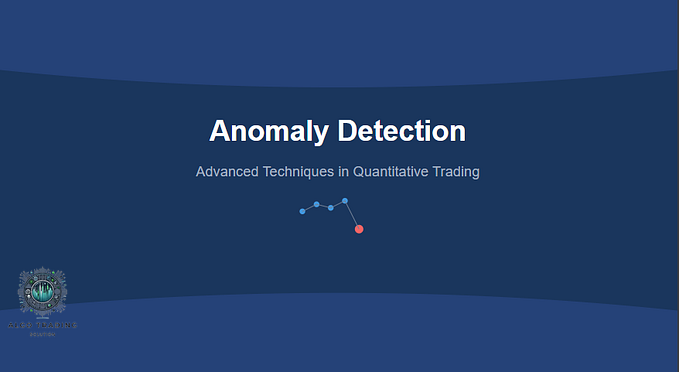Unlocking the Potential of Convolutional Neural Networks (CNNs) in Time Series Forecasting
Time series forecasting is a vital aspect of predictive analytics, used in various fields such as finance, weather forecasting, and demand forecasting. Traditionally, methods like ARIMA (AutoRegressive Integrated Moving Average) and Exponential Smoothing have been employed for time series prediction. However, in recent years, machine learning techniques, particularly Convolutional Neural Networks (CNNs), have shown remarkable promise in handling time series data. In this article, we explore the applications and benefits of using CNNs for time series forecasting.
Understanding Time Series Data
Time series data is characterized by observations collected over successive and equally spaced intervals of time. Examples include stock prices, temperature measurements, and sales figures, where each data point is associated with a specific timestamp. The primary goal of time series forecasting is to predict future values based on patterns and trends observed in historical data.
The Power of Convolutional Neural Networks (CNNs)
CNNs, initially designed for image analysis, have evolved to become versatile tools for processing sequential data, including time series. Their ability to automatically extract hierarchical features makes them well-suited for capturing complex temporal dependencies present in time series data.
Key Advantages of CNNs for Time Series Forecasting:
- Local Connectivity: CNNs employ convolutional layers that focus on local regions of the input data. This characteristic enables them to capture short-term patterns effectively, which is crucial in time series forecasting.
- Hierarchical Representation: CNNs consist of multiple convolutional layers, allowing them to learn hierarchical representations of data. This makes them capable of capturing both short-term and long-term dependencies.
- Parallel Processing: CNNs can process multiple sequences simultaneously, making them efficient for handling large datasets and multivariate time series.
Sample code
import numpy as np
import pandas as pd
import matplotlib.pyplot as plt
from tensorflow.keras.models import Sequential
from tensorflow.keras.layers import Conv1D, MaxPooling1D, Flatten, Dense
np.random.seed(0)
t = np.linspace(0, 100, 500)
y = np.sin(t) + np.random.normal(0, 0.1, 500)
train_size = int(0.8 * len(t))
train_data, test_data = y[:train_size], y[train_size:]
# Define a function to create sequences for training
def create_sequences(data, seq_length):
sequences = []
target = []
for i in range(len(data) - seq_length):
sequences.append(data[i:i+seq_length])
target.append(data[i+seq_length])
return np.array(sequences), np.array(target)
seq_length = 10
X_train, y_train = create_sequences(train_data, seq_length)
X_test, y_test = create_sequences(test_data, seq_length)
# Reshape the input data for the CNN
X_train = X_train.reshape(X_train.shape[0], X_train.shape[1], 1)
X_test = X_test.reshape(X_test.shape[0], X_test.shape[1], 1)
# Create a CNN model
model = Sequential()
model.add(Conv1D(filters=64, kernel_size=3, activation='relu',
input_shape=(seq_length, 1)))
model.add(MaxPooling1D(pool_size=2))
model.add(Flatten())
model.add(Dense(50, activation='relu'))
model.add(Dense(1)) # Output layer for regression
# Compile the model
# Mean Squared Error for regression
model.compile(optimizer='adam', loss='mse')
# Train the model
model.fit(X_train, y_train, epochs=50, batch_size=16, validation_data=(X_test,
y_test), verbose=2)
# Make predictions
y_pred = model.predict(X_test)
# Plot the original and predicted time series
plt.figure(figsize=(12, 6))
plt.plot(np.arange(len(y_train), len(y_train) + len(y_test)), y_test,
label='True')
plt.plot(np.arange(len(y_train), len(y_train) + len(y_test)), y_pred,
label='Predicted')
plt.legend()
plt.xlabel('Time')
plt.ylabel('Value')
plt.title('Time Series Forecasting with CNN')
plt.show()The below graph shows the prediction results of a very basic CNN algorithm.

Limitations of using CNNs for time-series forecasting
While Convolutional Neural Networks (CNNs) have shown promise in time series forecasting, they also come with limitations. Understanding these limitations is crucial when deciding whether to use CNNs for a particular forecasting task:
- Fixed Input Length: CNNs require fixed-length input sequences. If your time series data has varying lengths, you’ll need to preprocess it to ensure all sequences have the same length. This preprocessing may involve truncation, padding, or resampling, potentially leading to information loss.
- Limited Long-Term Memory: CNNs are designed for capturing local patterns in data but may struggle to capture long-term dependencies present in some time series. If your forecasting task heavily relies on historical data from distant time steps, recurrent neural networks (RNNs) or attention mechanisms might be more suitable.
- Black Box: While CNNs excel at learning features from data, interpreting these features can be challenging. Understanding why the model makes specific predictions might be less straightforward compared to traditional statistical methods like ARIMA.
- Data Requirements: CNNs typically require a large amount of data to perform well, which might be a limitation if you have a small or sparse time series dataset. In such cases, simpler models or data augmentation techniques might be more appropriate.
- Complexity: CNNs are computationally more intensive than traditional time series forecasting methods. Implementing and training deep CNNs may require access to powerful hardware, which can be a limitation for some users.
- Lack of Uncertainty Estimation: CNNs are deterministic models, meaning they provide point predictions. In some applications, especially where uncertainty estimation is essential (e.g., financial forecasting), probabilistic models like Bayesian neural networks or ensembles might be more appropriate.
Conclusion
Convolutional Neural Networks have evolved beyond image analysis and have proven to be formidable tools for time series forecasting. They excel at learning intricate patterns, both short-term and long-term, and can adapt to various domains, making them a valuable addition to the time series forecasting toolkit. As with any machine learning approach, it’s crucial to tailor the architecture and hyperparameters to the specific problem and dataset to achieve optimal results. With the ongoing advancements in deep learning, CNNs are likely to continue making significant contributions to the field of time series forecasting.







